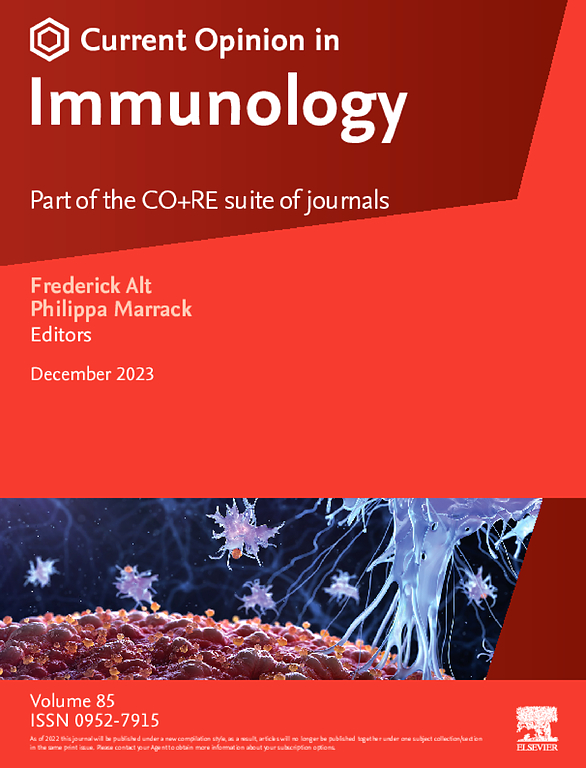补体在系统性红斑狼疮跨越时间和空间:从耐受性到组织损伤和从细胞外到细胞内功能
IF 5.8
2区 医学
Q1 IMMUNOLOGY
引用次数: 0
摘要
补体系统在系统性红斑狼疮的生理病理中起着矛盾的作用,根据疾病的分期,它既是一种保护机制,又是组织损伤的驱动因素。中性粒细胞胞外陷阱(NETs)通过促进补体活化和自身抗原暴露进一步加剧疾病活动性,形成一个放大的炎症循环。使用传统补体生物标志物(如CH50、C3和C4)监测狼疮性肾炎仍然具有挑战性;本文讨论了抗c1q、抗ficolin和抗c1s抗体以及基于组织的标志物(如肾C4d和C5b-9沉积物)作为疾病活动性和预后标志物的效用。有趣的是,补体的非规范功能,包括免疫细胞代谢调节中的细胞内作用,最近被描述。了解补体、NETs和免疫代谢之间的相互作用可能为治疗干预提供新的靶点。本文章由计算机程序翻译,如有差异,请以英文原文为准。
Complement in systemic lupus erythematosus across time and space: from tolerance to tissue injury and from extracellular to intracellular functions
The complement system plays a paradoxical role in systemic lupus erythematosus physiopathology, acting both as a protective mechanism and as a driver of tissue injury, depending on disease stage. Neutrophil extracellular traps (NETs) further exacerbate disease activity by promoting complement activation and autoantigen exposure, forming an amplifying inflammatory loop. Lupus nephritis remains challenging to monitor using conventional complement biomarkers such as CH50, C3, and C4; the utility of anti-C1q, anti-ficolin, and anti-C1s antibodies, along with tissue-based markers such as renal C4d and C5b-9 deposits, as markers of disease activity and prognosis, is discussed. Interestingly, noncanonical functions of complement, including intracellular roles in immune cell metabolism regulation, have been recently described. Understanding the crosstalk between complement, NETs, and immune metabolism may provide new targets for therapeutic intervention.
求助全文
通过发布文献求助,成功后即可免费获取论文全文。
去求助
来源期刊
CiteScore
13.30
自引率
1.40%
发文量
94
审稿时长
67 days
期刊介绍:
Current Opinion in Immunology aims to stimulate scientifically grounded, interdisciplinary, multi-scale debate and exchange of ideas. It contains polished, concise and timely reviews and opinions, with particular emphasis on those articles published in the past two years. In addition to describing recent trends, the authors are encouraged to give their subjective opinion of the topics discussed.
In Current Opinion in Immunology we help the reader by providing in a systematic manner: 1. The views of experts on current advances in their field in a clear and readable form. 2. Evaluations of the most interesting papers, annotated by experts, from the great wealth of original publications.
Current Opinion in Immunology will serve as an invaluable source of information for researchers, lecturers, teachers, professionals, policy makers and students.
Current Opinion in Immunology builds on Elsevier''s reputation for excellence in scientific publishing and long-standing commitment to communicating reproducible biomedical research targeted at improving human health. It is a companion to the new Gold Open Access journal Current Research in Immunology and is part of the Current Opinion and Research(CO+RE) suite of journals. All CO+RE journals leverage the Current Opinion legacy-of editorial excellence, high-impact, and global reach-to ensure they are a widely read resource that is integral to scientists'' workflow.

 求助内容:
求助内容: 应助结果提醒方式:
应助结果提醒方式:


